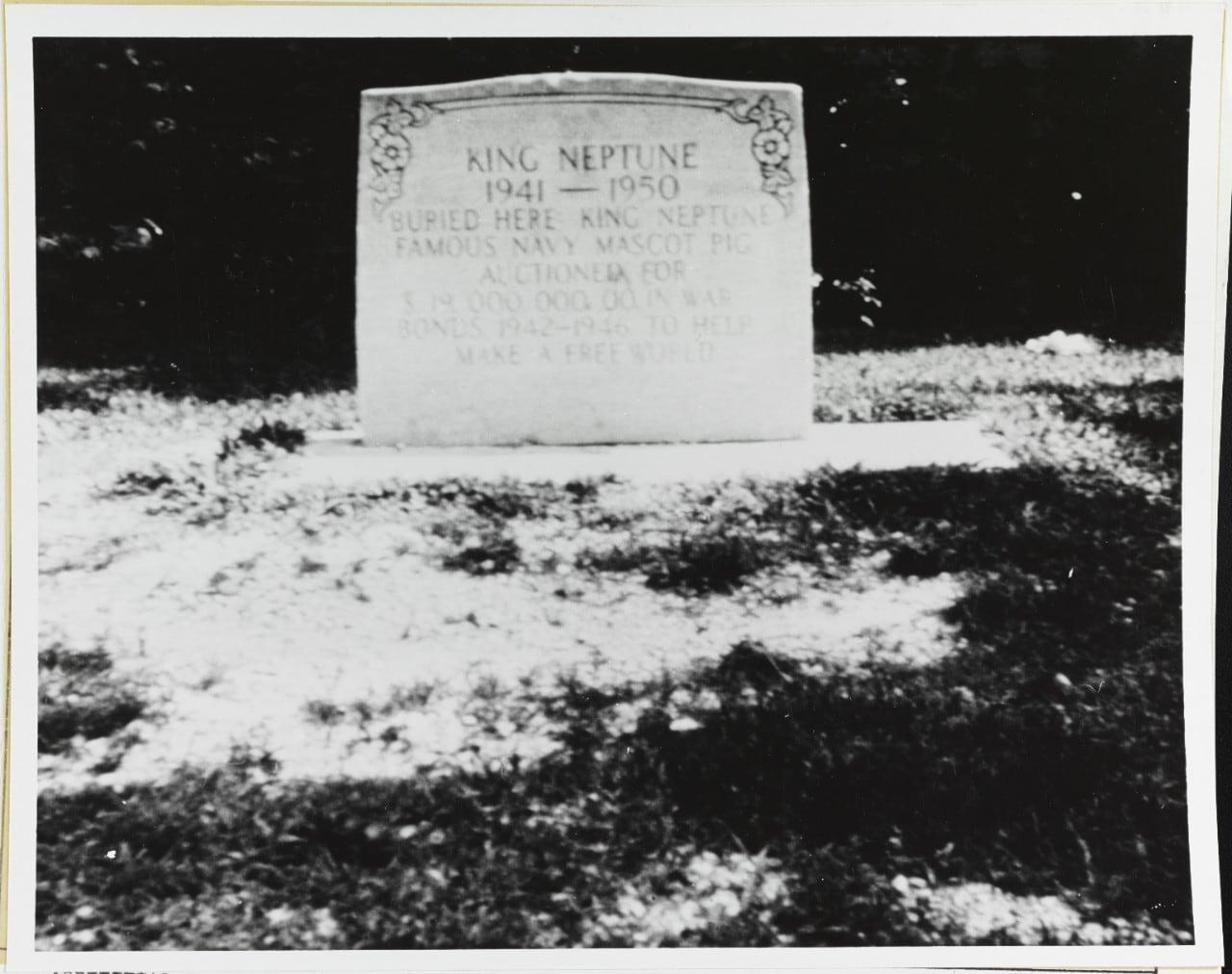Move over Wilber, there’s a new pig in town.
Sure, you got Charlotte to weave a web of lies to save your life, but Parker Neptune, later dubbed King Neptune, did it the hard way — by raising so much money for the U.S. Navy during World War II that naval officials had no choice but to spare him from his fate on a barbecue spit.
Born in 1942 on the Boner family farm in West Frankfort, Illinois, the Hereford swine caught the attention of a young Patty Boner, who picked the young King Neptune to raise for her local 4-H Club.
It was there that this porker took a patriotic turn. After the fair, the animal was donated to Don Lingle, a naval recruiter in the nearby town of Marion.
With wartime rationing, pork was a precious commodity and Lingle hit upon the idea of auctioning up portions of the piglet for a Navy fundraising dinner.
The story might have ended there if Lingle wasn’t hampered by his conscience and the doe-eyed sweetness of the young Neptune.
According to Atlas Obscura, Lingle found that he couldn’t muster the will to slaughter the pig — describing him in a later interview as “an innocent-looking thing.”
Despite being safe from slaughter, King Neptune was put to good use when the recruiter joined with local auctioneer, L. Oard Sitter. According to Stu Fliege, vice president of the Illinois Historical Society, the pair hatched the ingenious plan of using the Hereford swine to raise funds for the floundering USS Illinois battleship.
Originally slated to be a Montana-class battleship, the vessel rapidly underwent a redesign — to the tune of $125 million — to be fitted as a faster Iowa-class variant.
“On a whim, he draped the pig with a Navy Blue blanket,” wrote Atlas Obscura. “Maybe it was the blanket, or maybe it was the look in his eyes, but bits of Neptune began flying off the stage.”
A hundred dollars went for a leg, $300 for a shoulder. Even his squeal was sold for $25.
By the end of the auction, King Neptune had raised a whopping $11,200. No one demanded their pound of flesh, rather, they happily headed home with a war bond.
The event a smashing hit, Lingle decided to take King Neptune on the road, and as rumors of the pig’s lore spread so too did peoples’ wallets.
By his third appearance, King Neptune was drawing in the likes of $50,000 in bonds, with Illinois Gov. Dwight Green even “buying” King Neptune for $1 million in the name of patriotism.
By war’s end, King Neptune had brought in over $19 million for the Navy — roughly $320 million today.
Unfortunately, despite being a prodigious fundraiser, only 22 percent of the USS Illinois had been completed by 1945. Its plans were soon scrapped.
The rotund Neptune was by then rounding out to about 700 pounds. Fearing the porcine celebrity would make a very large snack for someone, Lingle took the pig to southern Illinois to live at the farm of Ernest Goddard.
“The hog was so fat, the fat had covered his eyes to where they were just little slits, so he couldn’t see where he was going,” Jim Goddard, the grandson of Ernest, told NPR. “So, they would take their cane and tap him on the left shoulder and he’d turn to the right and vice versa. That’s how they guided him around.”

King Neptune continued to live like royalty for another four years on the Goddard farm before contracting pneumonia just shy of his eighth birthday in 1950.
He was given a military funeral and buried just outside of the town Anna, Illinois, under a headstone noting the pig’s efforts “to help make a free world.”
The pig was eventually moved after his gravestone was vandalized and plans for a highway interrupted his long sleep. He now resides in the shade of oak boughs at the Trail of Tears Welcome Center on northbound I-57, according to the U.S. Naval Institute.
Claire Barrett is the Strategic Operations Editor for Sightline Media and a World War II researcher with an unparalleled affinity for Sir Winston Churchill and Michigan football.





